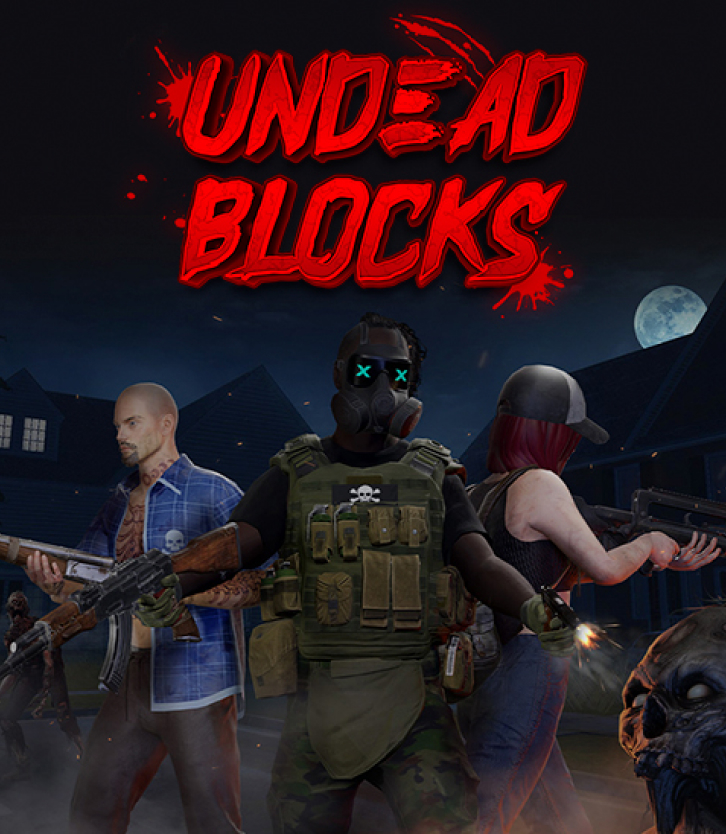To give you a short introduction to Call of Duty, let’s just list several of its world records:
- the best-selling first-person shooter game series
- the most successful video game franchise created in the United States
- the second best-selling video game franchise of all time
The game is so well made that real-life soldiers admitted they used it to improve hand-eye coordination and tactical thinking. For us as a game dev company, this is an exciting case in game development and monetization design.
The story of Call of Duty starts in 2003, when the first game, a first-person shooter set in World War II, was released. Since then, many have wondered, how much money has Call of Duty made over the years? We’re here to tell you all that is known about the game financial side.
A Brief Overview of Call of Duty Franchise
History and Evolution of Call of Duty
The first episode, called simply Call of Duty, was developed by Infinity Ward and published by Activision. The game was a massive success, praised by critics and players. It scored 91 on Metacritic and won Game of the Year at the 2004 Interactive Achievement Awards.
Since then, new titles have been released regularly. Looking back at over 30 titles that appeared in the last 20 years, we can trace Call of Duty’s curious evolution. First editions followed the World War II theme and later moved to modern-time war conflicts (Call of Duty 4: Modern Warfare 2007), futuristic settings (Black Ops II and Ghosts, 2012 and 2013), and Cold War era (Black Ops Cold War (2020).
With every new edition, the games developed cinematic storytelling. Inspired by popular war movies, the creators of Call of Duty tried to make the gaming experience similar to the film, and with advances in technology, this became increasingly prominent. Black Ops II introduced branching storylines with multiple endings affected by player choices to the franchise.
From 2007 on, Call of Duty advanced the multiplayer mode. Black Ops 4, released in 2018, was so focused on multiplayer that it removed the single-player campaign. That edition introduced Blackout, the series’ first battle royale mode.
The first free-to-play game in the series was Call of Duty Online, released exclusively in China in 2015. In other countries, CoD wasn’t free until 2020, when Call of Duty: Warzone appeared and became one of the most popular battle royale games of the time.
As with every big franchise, Call of Duty has more and less successful titles. The developers are not afraid to experiment with different aspects of the game while maintaining a consistent trademark of the series and committing to delivering top-quality results.
Key Titles and Their Impact on Revenue
The very first edition of Call of Duty, released in 2003, was a commercial success, with 4,5 million copies sold, but new records were set regularly in the franchise. Nowadays, since the revenue comes not just from direct sales but from other sources, it’s hard to have precise data in dollars, so let’s look at the number of copies sold.
The 2010 Call of Duty: Black Ops has sold over 31 million copies. It was the first edition set in the Cold War era and the first to introduce a zombie game mode (cooperative survival mode).
Call Of Duty: Modern Warfare 3 (2011), Black Ops Cold War (2020), and Modern Warfare (2019), a reboot of the Modern Warfare series, are three games that have sold over 30 million copies each.
The last episode of Call of Duty, Black Ops 6, released in October 2024, was named the biggest Call of Duty release ever by Microsoft CEO Satya Nadella. It set a record for day one players and Game Pass subscriber adds on launch day. It performed over 60% better in sales than the previous year’s release, Call of Duty: Modern Warfare III.
With new complex payment systems, like subscriptions and passes, sales are not as easy to count as they used to be, but the fact that Call of Duty manages to stay on top of the charts after more than 20 years of presence and surprise players with its new release in 2024 is clear.
How Much Money Does Call of Duty Make?
In 2022, it was announced that CoD revenue had surpassed $30 billion since 2003. In October 2024, Activision Blizzard reported that the Call of Duty series had sold 500 million copies. Based on this and the reported success of the latest episode, we can estimate that by 2024, the franchise has generated no less than $33 billion in revenue.
Here is data on revenue generated by the mobile version of the game. The numbers fluctuate month by month, but there is no general tendency to decline or strong growth.
However, if we look at the monthly downloads from 2019 to 2024, 2019 had a significantly bigger number than 2023 and 2024. The number of downloads isn’t necessarily directly related to revenue, as Call of Duty: Mobile is free to play.
Revenue Streams for Call of Duty
Direct Game Sales
When the game was launched in 2003, direct sales became a core driver of Call of Duty revenue. Despite changes in monetization trends throughout the years, the game’s new releases have always sold well. In 2019, the new title Modern Warfare brought over $600 million in revenue in the first three days after release.
The price of the Call of Duty edition ranges from $60 to $100. For dedicated fans, Collector’s editions are sold, including extras like bonus maps, collectibles, or in-game content.
In-game Purchases
In-game currency, COD Points, was first introduced in 2010 in Call of Duty: Black Ops, but it wasn’t tied to real-world money then. In 2012, Black Ops II introduced microtransactions, which allowed players to buy personalization packs, maps, weapons, and other downloadable content.
The selection of things that could be purchased through microtransactions became bigger in 2014, when “Supply Drops,” a.k.a loot boxes, were introduced. These were sets of random items that players bought without knowing what they would get inside. In 2015, Black Ops III made Supply Drops central to progression, including rare and powerful weapons that could only be obtained through loot boxes.
Image source: callofduty.fandom.com
In the following years, these items became increasingly important in the gameplay, which caused a lot of criticism. People felt that the system was shifting to pay-to-win, a strategy that wasn’t appreciated by many fans. What’s more, Supply Drops even were prohibited in some countries like Belgium and the Netherlands because they were similar to gambling.
As a result, Call of Duty stopped using Supply Drops, although they were making a lot of profit. Yet in-game purchases account for a big part of the game revenue, even without the loot boxes. In October 2024, the title generated approximately 22.65 million U.S. dollars in in-app purchases, contributing significantly to the Call of Duty annual revenue. Since its release, the mobile version has earned an estimated $1,7 billion through in-app purchases.
Battle Pass System
When Fortnite and Dota2 proved the success of battle passes, Call of Duty quickly caught up. In 2019, they introduced the novelty with Call of Duty: Modern Warfare. By purchasing the pass, players gain access to a set of items that are unlocked progressively through gameplay, adding a sense of achievement. Instead of simply buying items outright, the system offers players an engaging way to earn rewards, keeping them invested in the game.
Esports
In 2013, Activision, in collaboration with Xbox, hosted the first official global Call of Duty esports tournament, Call of Duty Championship, which had a total prize pool of $1 million and established Call of Duty as a competitive sport. In 2015 the Call of Duty World League (CWL) was created.
The modern version of CWL is called Call of Duty League, or CDL. Launched in 2020, the League had buy-in fees of about $25 million per team. Teams representing big cities play in 5v5 multiplayer mode. CDL follows a seasonal structure connected with many online and offline events.
Image source: STEWART-VOLLAND for Activision Blizzard Entertainment
However, in 2024, they decided to change the politics, canceled the fees, and introduced a two-year minimum revenue guarantee for the teams, thus providing more support and building a basis for a strong eSports league.
The growing CDL helps increase the franchise’s earnings. eSports events bring additional revenue from sponsorships, media rights, merchandise sales, ticket sales, and online streams.
Advertising and Sponsorships
Call of Duty started its history of big brand partnerships in 2009 when Modern Warfare 2 introduced promotional campaigns with Mountain Dew and Doritos offering promotional codes on their products.
Later, with the diversification of revenue streams, new partnership opportunities were opened. With the growth of microtransactions, bundles of downloadable content were created as crossovers with brands like Attack on Titan and Terminator. eSports events always attract big corporate sponsors. Call of Duty League was sponsored by Mountain Dew, Game Fuel, and Scuf Gaming.
Factors Contributing to Call of Duty’s Financial Success
Regular Updates and New Content
When many game series release new add-ons and packs every month, and others work for a decade to release a new masterpiece bestseller, Call of Duty has found a golden middle that works just fine. They keep their releases timely and accurate every year. With such a schedule, they can afford the risk of some episodes that don’t succeed and recover the following year. At the same time, seasonal packs and special DLC items are added throughout the year to support the subscription system.
Image source: Sledgehammer Games/Raven/Activision
Launched in 2003, Call of Duty hasn’t missed a year without release since 2005. That regularity is challenging to maintain in a turbulent gaming world, but it makes subscription revenue work well. When people know there will be a big release once a year, they know it’s worth paying regularly.
Regular updates and new content have kept the player base engaged. This strategic approach to releases maintains player interest and ensures that Call of Duty’s profit remains robust, even in a highly competitive market.
Diversity of modes
Like many best-selling titles, Call of Duty embraced the multiplayer experience and leveraged it to the fullest. There is also a battle royale and zombies mode, with a strong sub-community. For those who prefer single-player campaigns, Call of Duty is a great option, too. Cross-platform availability adds to the versatility of the game.
Community and eSports
Like all long-playing franchises, the game has a big fanbase of people who would buy every new release as well as subscriptions and merchandise. The Call of Duty team fosters community-building by integrating voice chats, Discord, friends lists, and other elements into the gameplay. There are many events that cement the community, such as in-game live events, double XP weekends, and special challenges.
Call of Duty League is also a strong boost to the community. Since its establishment in 2020, CDL hasn’t yet grown to millions of viewers like other eSports events. Yet, it has a solid fanbase and sets a place for CoD in the serious world of eSports.
Want to Develop a Game Like Call of Duty?
The secret to Call of Duty’s success is hard work and top-quality results. That’s why you need not only a professional and innovative team but also a dedicated one that can deliver results on time. At Kevuru, we have experience working with major AAA titles like Fortnite and Star Wars. Our 3D artists can create game art in a cinematic style like modern Call of Duty. Here is an example from our portfolio.
Contact us if you’re looking for a team of experienced professionals who can apply the latest innovations to the product and deliver the project on time.
Summary
Call of Duty didn’t get so big by inventing a new genre, revolutionary monetization system, or some groundbreaking innovation. The most important secret of their success is that they release top-quality games and do it regularly. Along with this, they are open to new trends in gaming and adopt them when they have proved to be efficient, as with the multiplayer mode or subscription system.
That’s why Call of Duty’s path of success is open to everyone willing to work hard and keep their standards high consistently. This strategy fits perfectly with Kevuru Games’ values. If you feel this way, too, learn more about our company, and let’s see if we match.









![Indie Game Development: Guide to Revenues, Most Profitable Genres & Monetization [+10 Best Indie Games 2024]](https://kevurugames.com/wp-content/uploads/fly-images/11949/indie-pre-138x138.jpg)
